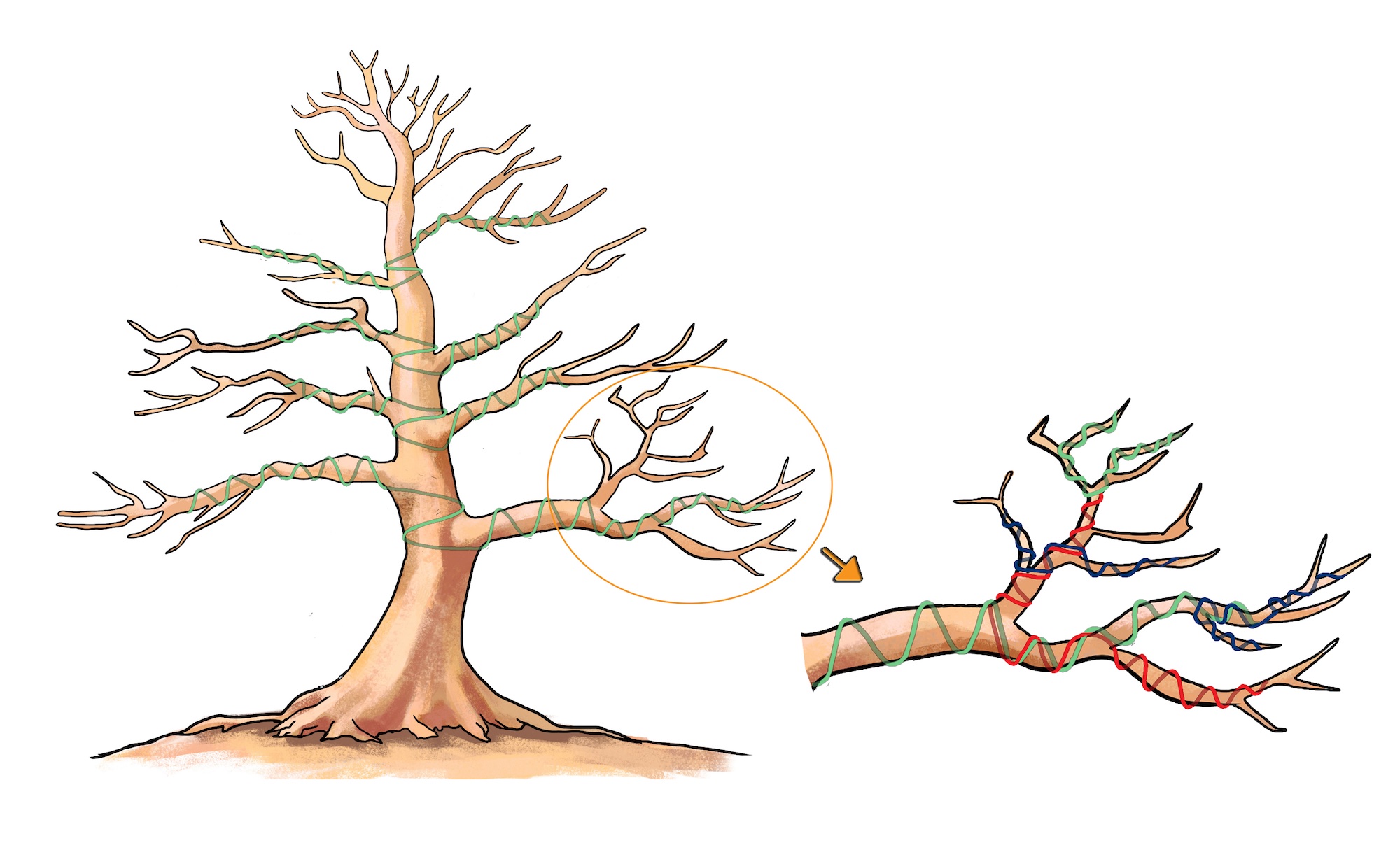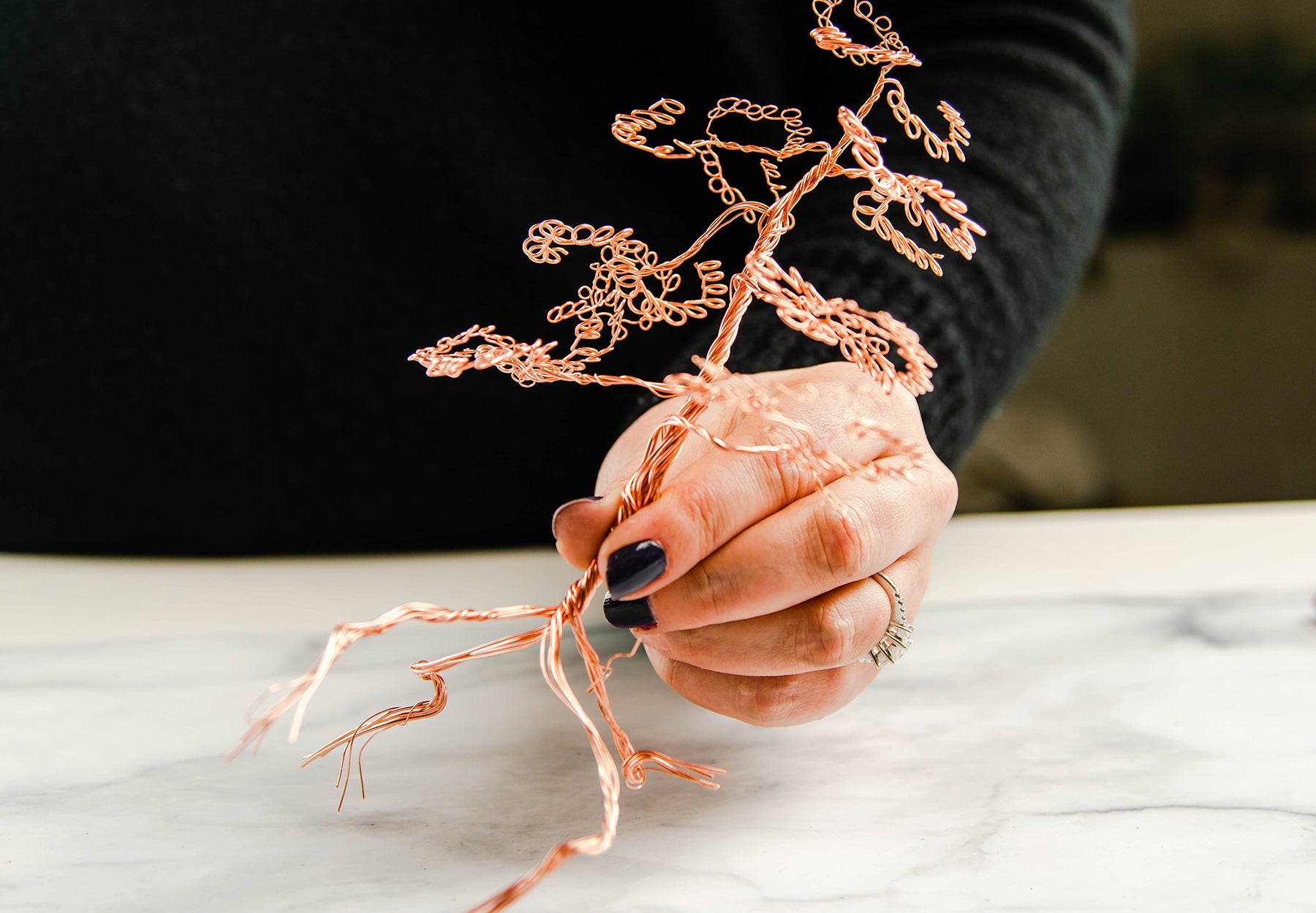To wire bonsai trees, use aluminum or copper wire to shape and train branches. Wrap the wire around the branch, then gently bend it.
Wiring bonsai trees helps guide their growth and shape. This technique allows for artistic expression, making the bonsai look natural yet meticulously groomed. Select the right wire thickness based on the branch size to avoid damage. Start by wrapping the wire from the trunk outward, ensuring it is snug but not too tight.
Monitor the tree regularly to prevent the wire from cutting into the bark. Proper wiring enhances the aesthetic appeal and health of your bonsai. Practice and patience are key to mastering this essential skill for bonsai enthusiasts.
Introduction To Bonsai Wiring
Wiring is a vital technique in bonsai art. It helps shape and train trees. This guide will introduce you to the basics of bonsai wiring.
Purpose Of Wiring
The primary purpose of wiring is to shape the bonsai tree. Wiring allows you to bend branches into desired positions. This creates the desired aesthetic look.
Wiring supports the structure of the tree. It helps in training the tree to grow in a specific direction. This is essential for creating a balanced and pleasing form.
Basic Tools Needed
Before starting, gather the necessary tools. Here is a list of basic tools required:
- Wire: Use aluminum or copper wire. These are flexible and strong.
- Wire Cutters: Essential for cutting the wire to the required length.
- Branch Cutters: Useful for trimming branches.
- Bonsai Pliers: Helps in bending and twisting the wire.
- Scissors: For precise cutting of small branches and leaves.
| Tool | Purpose |
|---|---|
| Wire | Shape and train branches |
| Wire Cutters | Cut the wire to length |
| Branch Cutters | Trim branches |
| Bonsai Pliers | Bend and twist wire |
| Scissors | Cut small branches and leaves |
Having the right tools makes the wiring process easier. It ensures you get the best results for your bonsai tree.

Credit: www.youtube.com
Choosing The Right Wire
Wiring is a crucial aspect of shaping bonsai trees. Selecting the right wire ensures your tree grows as desired. Let’s explore the types of wire and their thicknesses.
Types Of Wire
There are two main types of wire used for bonsai trees:
- Aluminum Wire: Ideal for beginners. It is easier to handle and bend.
- Copper Wire: Preferred by experts. It holds its shape better but is harder to work with.
Both types have their advantages. Choose based on your skill level and tree type.
Gauge And Thickness
Wire gauge refers to its thickness. The gauge affects how well the wire can shape the tree. Here is a simple table to understand different gauges:
| Gauge | Thickness (mm) | Usage |
|---|---|---|
| 1.0 | 0.81 | For small branches |
| 1.5 | 1.29 | For medium branches |
| 2.0 | 1.63 | For larger branches |
| 2.5 | 2.05 | For thick branches |
Always use the right gauge for the branch size. This prevents damage and promotes healthy growth.
Preparing Your Bonsai
Before you start wiring your bonsai tree, it’s crucial to prepare it. Proper preparation ensures the tree responds well to wiring and reduces stress. Follow these steps to get your bonsai ready.
Selecting The Branches
Choose branches that are healthy and flexible. These branches will be easier to shape and less likely to break. Avoid wiring branches that are too thick or brittle.
- Look for branches with good growth.
- Choose branches that are not too close together.
- Select branches that enhance the tree’s overall shape.
Cleaning And Pruning
Cleaning and pruning your bonsai is essential. Remove any dead or unhealthy leaves and branches. This helps the tree focus its energy on healthy parts.
Use sharp, clean tools for pruning. Dirty tools can spread disease. Make clean cuts to avoid damaging the tree.
- Remove dead leaves and branches.
- Trim any unnecessary growth.
- Ensure your tools are clean and sharp.
Pruning helps in shaping the tree. It also makes wiring easier. Clean your bonsai regularly to maintain its health and shape.

Credit: www.bonsaiempire.com
Wiring Techniques
Learning how to wire bonsai trees is a vital skill for any bonsai enthusiast. Wiring helps shape the tree and direct its growth. This section will explore two essential wiring techniques: the Single-Wire Method and the Double-Wire Method. Each method has its unique benefits and applications.
Single-wire Method
The Single-Wire Method is great for beginners. It involves using one wire to shape a single branch. Follow these steps:
- Choose a wire that matches the thickness of the branch.
- Start at the base of the branch and wrap the wire at a 45-degree angle.
- Ensure the wire is snug but not too tight.
- Continue wrapping until you reach the tip of the branch.
- Gently bend the branch into the desired shape.
This method is ideal for small branches. It offers precise control over the shape.
Double-wire Method
The Double-Wire Method is for more advanced wiring. It involves using two wires to shape two branches at once. Follow these steps:
- Select two branches of similar thickness and position.
- Choose a wire that is strong enough to support both branches.
- Wrap the wire around the trunk at a 45-degree angle.
- Split the wire into two strands, one for each branch.
- Wrap each branch in the same manner as the Single-Wire Method.
- Bend both branches into the desired shapes.
This method provides more stability. It is useful for shaping larger branches.
Here is a comparison table for quick reference:
| Method | Best For | Steps |
|---|---|---|
| Single-Wire Method | Small branches | 5 steps |
| Double-Wire Method | Large branches | 6 steps |
Both methods are essential for bonsai shaping. Choose the right one based on your tree’s needs.
Shaping And Bending
Shaping and bending are essential techniques for wiring bonsai trees. These methods help in designing the tree’s structure and defining its aesthetic appeal. Proper shaping and bending ensure your bonsai looks natural and healthy.
Creating Curves
Creating curves in the branches is a key aspect of bonsai shaping. To create a curve, wrap the wire around the branch, starting from the trunk. Bend the branch gently to form the desired shape. Repeat this process for other branches to achieve a natural look.
- Start by selecting the right wire size.
- Wrap the wire at a 45-degree angle.
- Use both hands to bend the branch gently.
- Make sure the wire is snug but not too tight.
Avoiding Breakage
Preventing branch breakage is crucial while shaping your bonsai. Always bend branches slowly to avoid snapping. Use your thumb to support the branch while bending. This helps distribute pressure evenly and reduces the risk of breakage.
| Tip | Description |
|---|---|
| Choose the Right Wire | Use aluminum or copper wire for flexibility. |
| Monitor the Branch | Check the branch regularly to prevent damage. |
| Practice Patience | Allow the tree time to adjust to the new shape. |
By following these techniques, you can shape and bend your bonsai tree effectively. Remember to be gentle and patient throughout the process. Your bonsai will thrive and exhibit a beautiful, natural form.
Aftercare For Wired Bonsai
Wiring bonsai trees is an art that requires patience and precision. After wiring your bonsai, it’s crucial to provide proper aftercare. This ensures the tree stays healthy and the wiring process is successful. Here are some essential steps for aftercare.
Monitoring Growth
Regularly check your bonsai for growth changes. This helps you spot issues early. Look for swelling around the wire. Swelling indicates the wire is too tight.
Inspect the branches weekly. This prevents potential damage. Healthy growth means the tree is adjusting well to the wire.
Adjusting And Removing Wire
Adjust the wire if you see signs of tightness. Gently loosen the wire to relieve pressure. This helps the tree grow without injury.
Remove the wire carefully when it’s time. Use wire cutters to avoid damaging the branches. Follow these steps:
- Start from the top of the branch.
- Cut the wire in small sections.
- Gently unwrap each section.
Removing the wire correctly ensures the tree remains healthy.
| Step | Description |
|---|---|
| 1 | Monitor weekly for growth and tightness. |
| 2 | Adjust the wire if it’s too tight. |
| 3 | Remove the wire carefully using cutters. |
Proper aftercare ensures your wired bonsai thrives. Regular monitoring and careful adjustments are key.
Common Mistakes
Wiring bonsai trees is an art that requires skill and patience. Many beginners make common mistakes that can harm their trees. Understanding these mistakes can help you avoid them and grow healthy bonsai trees.
Over-wiring
Over-wiring is a frequent mistake made by beginners. Wiring should support the tree’s shape, not choke it. Too much wire can restrict growth and damage the bark.
Signs of over-wiring include:
- Wire cutting into the bark.
- Tree looking unnatural or forced.
- Restricted branch movement.
Always check the wire regularly. Remove it before it starts cutting into the bark. Use only the necessary amount of wire to shape the tree.
Improper Placement
Improper placement of wires can also harm bonsai trees. Wires should be placed carefully to guide growth without causing injury.
Common improper placements are:
- Wires crossing each other.
- Wires too close to the leaves.
- Wires not anchored well.
Place wires at a 45-degree angle around branches. Avoid placing wires too close to the leaves, as they can damage them. Anchor wires securely to prevent slipping.
By understanding and avoiding these mistakes, you can wire bonsai trees effectively. This will help you grow beautiful and healthy bonsai trees.
Advanced Tips
Bonsai tree wiring is an essential skill for enthusiasts. Advanced tips help refine this craft. Mastery requires understanding of aesthetics, timing, and tree health.
Wiring For Aesthetics
Wiring for aesthetics shapes your bonsai into a beautiful form. The goal is to create a natural look. Use wires to guide branches into elegant curves.
Choose the right wire size. Thick wires for strong branches. Thin wires for delicate branches. Copper and aluminum are common choices. Copper is stronger, aluminum is easier to handle.
Wrap the wire at a 45-degree angle. This supports the branch and prevents damage. Avoid crossing wires. This can harm the tree and looks messy.
Pay attention to the tree’s natural shape. Enhance its beauty. Do not force branches into unnatural positions. Balance is key. Symmetry creates harmony. Asymmetry adds interest.
Seasonal Considerations
Seasonal considerations are crucial for successful wiring. Each season affects the tree differently. Timing is essential for the tree’s health.
Spring: Best for wiring deciduous trees. New growth is flexible. Be gentle to avoid damage.
Summer: Trees grow rapidly. Check wires often. Adjust as needed to prevent cutting into the bark.
Autumn: Good for conifers. Growth slows, making wiring easier. Avoid wiring during leaf drop.
Winter: Trees are dormant. Wiring is safe. Be careful with brittle branches.
Regularly check your wired bonsai. Remove wires before they cut into the bark. This prevents scarring and promotes healthy growth.

Credit: excelblades.com
Conclusion
Mastering the art of wiring bonsai trees takes patience and practice. With the right techniques, your bonsai will flourish beautifully. Always choose the correct wire and apply it gently. Regularly check and adjust the wires to avoid damage. Happy bonsai crafting, and enjoy the journey of shaping these living masterpieces!

